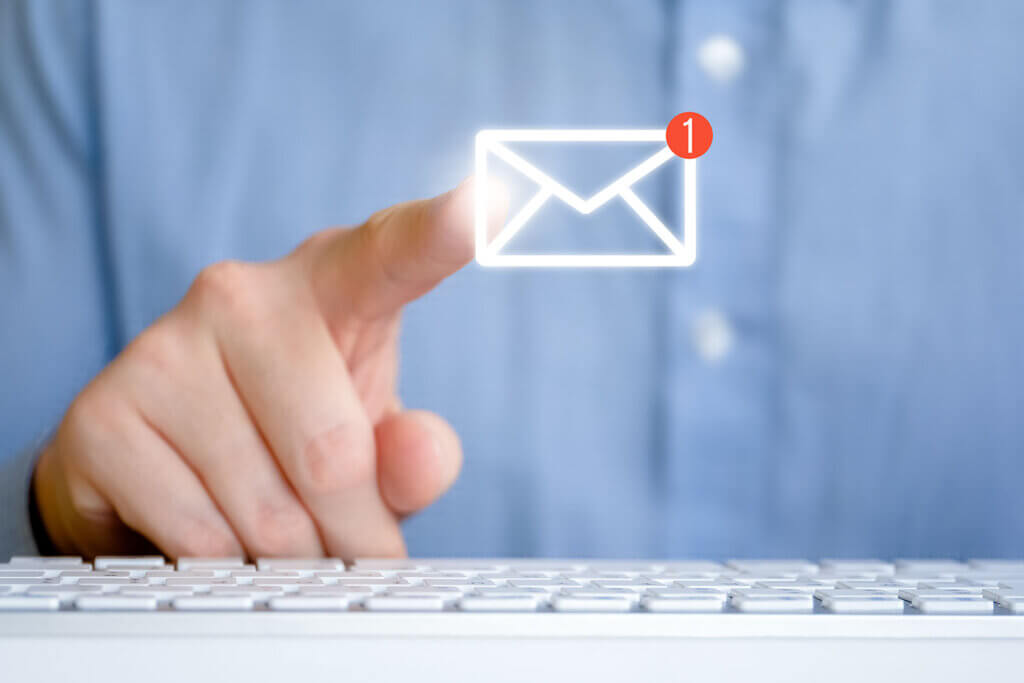Best Practices to Start Today
Before hitting “send,” there are a few things you should know about email marketing. Email marketing is a technical, almost scientific process that requires significant background knowledge for successful execution. In other words: you can’t draft up an email marketing plan at 4:30 PM on a Friday. Email marketing takes time, patience, and a keen eye for detail.
In today’s article, we’ll cover 15 email marketing best practices essential to any successful strategy. Let’s get into it:

1. IP Priming
IP priming, also known as IP warming, is the process of incrementally increasing the volume of mail sent from a dedicated IP address. This process helps develop a positive reputation with Internet Service Providers, and legitimizes the IP address as a sender. It increases the chances of mail getting into the inboxes of your contact base.
2. Use Subdomains
Sending emails from only a parent domain increases the chances of them landing in the junk folder. By sending emails from multiple subdomains, it allows for better control over domain reputation, ultimately resulting in a higher domain score. By using subdomains, you can also differentiate between engagement levels among emails, further increasing deliverability.
3. Use a Dedicated IP and Sender Policy Framework
This technique allows for a pass with standard security checks with mail servers. This “check” is an open standard used to prevent spammers from sending junk messages from your domain. Avoiding this is essential to upholding a good reputation with the contacts on your email list.
Please keep in mind, you only want to use a dedicated IP when you are sending large monthly volumes of email, greater than 50000 emails a month.
4. Monitor Sender Reputation
By monitoring sender reputation, you can determine any negative changes in sending practices before they irreparably harm your reputation. Emails coming from senders with low reputation are at a high risk of being dumped in the spam folder. If an email doesn’t reach the recipient’s inbox, your email marketing campaign is ineffective. Sender reputation should be checked often. It can be affected by many different factors, including the number of emails sent by an organization, how recipients interact with these emails, and how often recipients unsubscribe from a mailing list.
5. Monitor Feedback Loops
Despite being highly useful, feedback loops have a history of being underused in most organizations. When a recipient sends an email to the spam folder, the feedback loop sends the sender reports to suppress and track these complaints. Monitoring these loops helps address these issues, and keep a positive sender reputation.
6. Maintain a Consistent Sending Schedule
When it comes to email marketing, a lack of scheduling can break a campaign, creating sending spikes that irritate recipients and force sender reputation down the drain. The most effective emails are time-zone dependent, sent on consistent days, and sent to smaller lists.

7. Use a Double Opt-In
This is the process of validating a contact by sending an opt-in confirmation email once they have filled out a sign-up form. This is the recommended defense against spam complaints. The double opt-in results in more opens, leading to a higher sender score.
8. Purge Lists
Continually sending emails to recipients who don’t open emails can do serious damage to sender reputation. The list purging process involves regularly updating a contact list by removing outdated contacts and responding to recipient preferences.
9. Avoid Contests
Although it may be a tempting marketing ploy, contests and giveaways can be a death sentence for your email reputation. Users will enter multiple times with multiple emails, and are not actually interested in the product or services you offer. Multiple entries will harm email list integrity, resulting in fewer opens and a lower domain score.
10. Email Frequency
As a best practice, we recommend sending emails to customers one to three times per week. This seems to be the golden number to keep the audience base interested and engaged in your content.
11. Email Volume
Do not send emails to the entire contact base at once. Consider sending to smaller lists of about 1,000 contacts on a schedule for the best results. Some bulk email sending programs like Zoho Campaigns, allow for batch emails; with a list of 10000 clients, you can schedule to send as high as 10 batches for that list in increments of 60 minutes.
12. Take Advantage of the “From” Line
The “from” line is often disregarded as an unimportant and ordinary space in emails. From lines are what help you stand out in an inbox. By sending the email from a person the recipients know and trust, your audience will be more likely to open and interact with the messages.
13. Monitor Blacklists
A blacklist is a real-time list that works by identifying domains or IP addresses known for sending spam. They are used by a variety of organizations to prevent spam from jamming up their inboxes. Monitor blacklists often to ensure there are no issues, and if so, take the necessary steps to correct the blacklist. This often requires cleaning up emails and sending lists. If emailing through an email service provider, the organization will let you know how to fix the problem.
14. Don’t Buy Email Lists
Purchasing pre-formulated lists is a trap many marketers fall into. Although it may seem like an easy, cost-effective option, purchased lists tend to lower sender reputation. First of all, people on a purchased list don’t actually know you. They might work or operate in a related industry, but the personal connection is missing. This can make your emails come across as annoying and spammy. What’s more, if using an email service provider, you are bound to be penalized for sending to a purchased list. Some providers won’t even let you do it in the first place.
15. Follow Google Practice Guidelines
If your company is sending out mail in bulk, it’s essential to follow Google’s Bulk Mail Guidelines. These best practices will improve the mail delivery rate by ensuring those receiving emails actually want to be receiving these emails. Also included in Google’s guidelines are subscription and unsubscribing tips, formatting tricks, and information about third-party senders.
With these best practices in mind, you’re ready to deliver a great email marketing campaign. To gain better insights on what email marketing tools are available to you, see our definitive guide for Zoho Campaigns.







